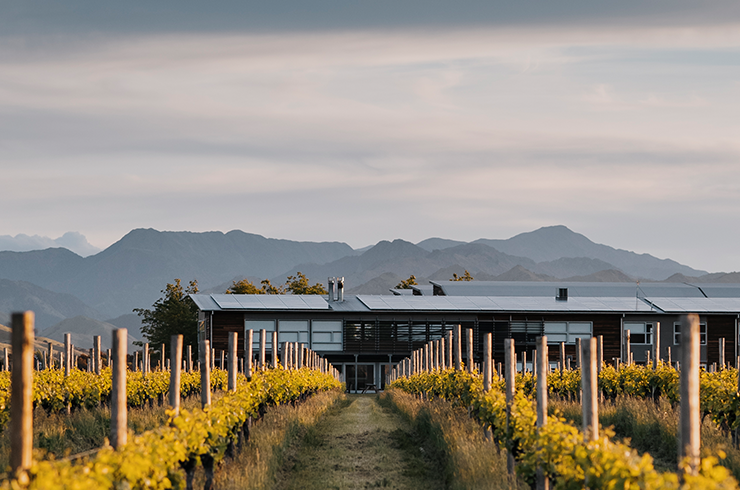Georgian wine to try
I’ve just returned from a whirlwind trip to the crucible of wine, Georgia (the country, not the state in America). I was blown away. Not only does Georgia boast a winemaking tradition that dates back over 8000 years, but it’s also often regarded as the original wine-producing country. The people, food, culture and incredibly bucolic scenery (hello Caucasus Mountains thundering in the distance) are all a compulsion for the intrepid traveller.
Traditional winemaking in Georgia
That you can see living culture in its continuity, a near unbroken line of traditional winemaking and grape growing, is a remarkable thing. More so the adherence to traditional winemaking, particularly through the lens of amber wines, also known as orange wines. This genre of wines typically delivers not only an array of distinct colours, from golden yellow through to deep amber, but a kaleidoscope of deep, often chewy, tannin-laced texture and a deeper intensity and complexity.
The production of amber wines in Georgia mostly draws influence from the ultra-traditional approach of fermenting white grapes in large, egg-shaped clay vessels buried underground – these are known as qvevri and are formative in amber wines. Here the white grapes, juice, skins, seeds, and sometimes stems are fermented together, usually for months, often through several seasons. The unique shape and clay materials used are purported to lend additional distinction to resulting wines, and make for dramatic viewing, typically buried in the ground in earth-floor cellars.
This distinct style of wine has gained notoriety and popularity in a breadth of countries around the world, Australia included. Global winemakers have cottoned on that amber, or orange wines, make for a intriguing and often delicious diversity in their varied winemaking repertoires.

Modern Georgian amber wines
For Georgia, in modern times, amber wines remain a symbol of artisanal craftsmanship and cultural heritage – plus they go amazingly well with their iconic feasts, resplendent with seasonal vegetables, charcoal-cooked meats, khachapuri (cheese stuffed flat breads), khinkali (meat and veggie filled dumplings), and sundry dips, sauces and stews. Indeed, amber wines generally seem to be versatile in cutting richer dishes with tannin and acid or sidling up to fresh seafood and lighter fare as a final condiment in the glass.
Common grape varieties of amber wines (of the staggering 500 or so grown in Georgia) include rkatsiteli, kisi, mtsvane and chinuri, each contributing unique personality to the final wines. Nuance is distinctly found in regional variation, vineyard site and grape varieties used, as is commonplace with similar techniques in red winemaking. Complexity is writ large, despite what some may see as characters that veer into wilder streaks and non-conventional territory.
Georgian wines in international markets
Formative producers like Pheasant’s Tears, Iago’s, Okro’s and Nikoladzeebis Marani, as examples, helped pave the way for the redux of Georgian wines in international markets, while younger generation winemakers (of which I witnessed 30-plus at a recent wine fair in Tbilisi), seem to be revving their engines to compete domestically and globally, with refined, purer expressions a motif – take note of Igavi, DoReMi, Mariam Guniava’s and Vinono as some of the notable producers.
In recent years, Georgian amber wines have come further to the fore, both domestically and internationally, with a broader trend towards natural winemaking ethos and an increasing interest in artisanal, small-batch wines with unique profiles. The revival of Georgian amber wines is evidence of a continuity of traditional winemaking practices and the allure of wines that reflect a sense of cultural heritage, time and place, with a broad application in global drinking culture.
Three amber wines to try:
2022 DoReMi Chinebuli Chinuri Goruli Mtsvane, Kartli
Sees extended maceration. A vibrant take on the amber wine style. Wildflowers, candied citrus, hazelnut and dried apple scents and flavours with some light curry powder notes. Textural and refreshing at once. Versatile, is the gist.RRP $58
2021 Okro's Wine Zvari Rkatsiteli, Kakheti
Only a week of skin contact here. A good deal of chew in texture for that maceration but a core of bright, briny minerality doused with nashi pear, lemon verbena, just-ripe peach and alpine herbal notes. A refreshing, lighter amber wine, with quiet complexity.RRP $48
2022 Pheasant's Tears Rkatsiteli Tibaani, Kakheti
Macerated on skins for six months in qvevri. The full deal here, powdery-chalky texture, dried apple, lemon-ginger tea, apricot, ginger and cinnamon spice. A powerhouse yet with high drinkability and compelling character.RRP $55
Expand your knowledge with Halliday Wine Academy
Halliday Wine Academy offers an in-depth view of the Australian and international wine landscapes. Select Introduction to Wine to learn about Australian wine and regions or choose Wines of the World (part one) to get to know international wines.Through Introduction to Wine, students will learn about Australian wine and wine regions, how wine is made, how to taste and describe wine, how to approach food and wine matches, along with handy tips that address common wine questions. And in part one of our Wines of the World course, discover and explore the iconic wines, regions and laws of France, Spain, Portugal, Hungary, Germany and Austria.






